The Making of Brauer Motion: How A Master Mixer Reinvented Panning
Talk with Michael Brauer, and its immediately clear why he’s mixing like no one else: He communicates in conversation just as he does with his mixes – authentic, original, expressive.
From his suite at Electric Lady Studios, Brauer’s epic discography has continued to expand with John Mayer, Tony Bennett, Kelis, Kaiser Chiefs, Elle King, James Bay, The Fray, Bon Jovi, and Phoenix. But faders aren’t the only thing keeping him busy. Waves has just launched his Brauer Motion spherical auto-panner, a next-level circular panner channeling Brauer’s expertise in emotional motion directly into everybody’s DAW.
On top of that, the Mix With the Masters seminar series that he launched eight years ago is still going strong. Presiding over a 2017 lineup that includes upcoming weeks with Al Schmitt, Tchad Blake, Alan Meyerson, and Joe Chiccarelli, educating on audio best practices is also on his agenda.
It’s a practice that illustrates the diverse path that audio pros take today, with Brauer operating at the highest-level convergence of engineering, software development and education. Not that it’s easy, as he found out in the process of developing his very first Michael Brauer plugin – a roller coaster ride that pushed him and his collaborators to audio’s edge before exceeding his wildest expectations.
Michael, the last time we sat down for an interview was in 2012 [see the full article here]. I imagine some things have changed for you, and some have stayed the same since the last time we spoke.
I’m still mixing good music. I’ve moved further away from the indie, more into the rock. Having said, that my last big records were James Bay and Elle King which are all kind of alternative. But lately it’s moving a little bit more aggressive.
What’s changed is working on designing a plugin. That really took time, a lot of time. But it was something that I wanted to do because I just wasn’t getting enough from whatever software panners and stuff that was out there already, and my hardware one wasn’t doing much for me anymore.
I think that’s where the best inventions always come from. It’s not like, “What can I create so I’ll get rich quick.” It’s, “I need this thing, and it’s just not out there.” What were the roadblocks you kept encountering that made you realize, “OK this doesn’t exist. I’m the one that’s going to have to make it?”
The first problem was that none of the ones that worked the best were software-based. The only one I liked was a hardware unit, the (Songbird FS-1) Cyclosonic (Advanced Stereo Panner). And my Cyclosonic was basically falling apart, although I think it still was quite radical in its circular type of panning with phasing issues.
I figured out certain things to do so that it wouldn’t disappear on the back end of the circle, but there were so many things I wanted to do time-wise, and I felt like it was now limited. When it first came out it was exactly what I was looking for.
You’re famed for so many of your techniques, especially parallel compression, but for any mixer obviously panning is a huge thing, even though it doesn’t always get talked about. Tell me the role that panning plays in a mix.
Well, you’ve got your basic left, center and right, and then anything in between. But the fourth panning position is one where it has no home, it just keeps moving. And there are times when a mix might no longer have any room for a static placement — that’s a time when it’s best to have a panning position that just keeps moving.
But also the whole point of that is to add movement and motion to a song. Certainly you wouldn’t want to put it on a vocal and have that whipping around a mix all day long. But things like a synthesizer, maybe a pad that just feels like that it could have more movement by going slowly left to right, panning could really just enhance a chorus or bridge.
And then there’s times when I want to be able to add rhythm to something that just didn’t have much rhythm to it. It could be a loop that’s just a little too static-feeling – it’s a mono loop and I want it to have more movement from left to right. Which I did to some success with the Cyclosonic, but in my mind I wanted to go much further and the kind of triggering that allowed that to happen.
I always had certain ideas in my head of a panning movement that none of the panners were offering yet. That was all part of the idea in a mix that can enhance a section, a chorus or bridge. That’s where panning movement can really help.
When is panning the right time to introduce these elements in the mix, and when is it the wrong time? When do you look elsewhere?
The compression and the placement is all natural, that always comes first. The time when there’s panning, it just occurs to me! (laughs) I’ll be listening to something and say, “Wow, this would feel better if it had some movement to it. Maybe the high hat could do a little bit more movement, because the song is feeling really boring right now and something needs to move, and I don’t see anything in the production that I can use.”
So it’s when there’s something lacking that those ideas come up. Because as a mixer I’m not adding additional production, I’m just mixing. I don’t hire anybody to fix stuff. I fix it by simply doing what I’ve got to do, which is limited to what I have in front of me. If it feels like it could have some more movement then a panner — especially the one that I’ve just designed — can help immediately. And if I put it, and I go, “Wow, the song just feels like it’s moving along better,” than it’s good. And if the idea sucks then you gotta remove it! (laughs)
So it sounds like panning occurs to you later in the process?
Not necessarily. If I’m starting with a loop and the loop’s just kind of sitting there, and within the loop there’s a high hat and some toms but it’s all mono I’ll say, “Wow, it would be great if the high hat could maybe move over to the left, and the toms could pan when they come in.”
With this plugin you can do a sort of triggering, so that the loop stays in the middle, except when it’s hearing high end stuff. For example, set that up so that whenever the high hat plays it will start panning. But the whole loop doesn’t pan, just certain elements and that adds great movement to the song.
When the idea comes to improve a mix, it can be at any point, the beginning or the end — I can be sitting there after the mix is done and I’m thinking, “Wow, what else could happen now? Is there any way to get this bridge to explode a little bit more?” At that point I’ll have a list of things in my head that I run through, a little checklist, and if one of them connects then I’ll do it.
The Path to a New Plugin
It’s still a big leap from, “What I’ve got isn’t cutting it,” to “I’ve got to invent this thing.” So what led to actually creating the Brauer Motion plugin with Waves?
I had been thinking about things that I wanted a panner to do, and I couldn’t find it anywhere in the software. I got really creative with the Cyclosonic to get it to do certain things that nobody else would have thought of it doing — I was trying to get further and further away from what it could do, and it had this limit. But until Waves approached me, there was just nothing I could do about it.
I wanted to get more and more into rhythm, not just have it moving around, but getting it to add to a part so that a guitar, for example, would have way more rhythm to it. And there was a point where I said, “Well, hopefully someone will come up with one.” I’ve been working with panners for years and years, more than anyone else I think, so I knew where it could go. It wasn’t until (Waves Product Manager) Mike Fradis approached me and said, “Hey, would you be interested in doing a plugin?” I said, “Yeah, absolutely.”
How did the concept start to unfold from there?
I really wanted to come up with something that was going to be breaking new ground. I mentioned a few ideas, but the main one was the panner. He came by, we sat down and talked, and I gave him the whole concept of how this shouldn’t be like anything else that’s out there.
As far as a visual, I wanted it to be really 3D-type. Very, not futuristic necessarily, but just visual so that you could see what you were hearing. There had to be a lot of depth to it, just the way the panner would be when it goes into a circular mode. And I really wanted to get into the different triggering modes, because that was going to be very important to get the rhythm going.
I said, “I can give you a starting point, but it’s strictly just a starting point. This is the Cylcosonic panner. This is what it does. Aside from the left-to-right, and the right-to-left, patterns, there’s a circular pattern. But I don’t really like the circular pattern that it offers, because for the most part, you lose it on the back end of the circle.” It was something to start off with.
Mike was very, very interested in this, and he’s the head of all these projects. He wanted to put a crew together that would be right for this, especially making the GUI (Graphical User Interface). I’d never made a plugin before, so I had no idea how the process worked. Before you do a GUI, you just have what looks like a graph with little boxes. The first version that came out I was like, “What is this?” It was so unmusical looking! (laughs). I had a learning curve myself, because none of it made sense to me.
So, I’d say, “More this, less of that,” but I had no idea what these things did. They would make the adjustments, but then I wouldn’t really know what to add to it. This unfolded over months and months. There was a point where I said, “OK, can you just make it pan left and right? I just want to hear that.” (laughs) Everything was kind of just OK at that point. I’m like, “Who’s going to care about this?” It was in the early stages, and I didn’t know where it could go.
The Waves design team were very patient with me. Understand that the whole design process was foreign to me — trying to describe how I want to hear and see the way the plugin pans was very difficult to articulate. There wasn’t really anything to reference.
Eventually, there was a point where I said, “Look, we have to get the GUI going, so I have at least some visual of what these things are doing.” So I described what I had in my mind to the GUI designer, Dani Bar Shlomo, and when he came back with a first design draft about a month later it was almost nailed. It’s basically what you see now.
So now I have the visual and I had the little buttons. I’d be mixing and try to use it, and I’d be like, “It’s unusable — it’s not musical yet. I can’t get it to do what’s in my mind.”
That must have been a tough period to get through.
They never gave up, but I was like, “This is still far from what I want.” So they’d keep working on it and give me something else. It was a really long, arduous process for both of us, because they basically never saw me smile. We’d do sessions with live streaming and Skype, and slowly work through the newest revisions. My mantra became, “It’s not musical enough guys. Can we push it further?”
Finally around March, they went over the hump: It now started to sound really, really cool. They had the circular going really well, they had the left to the right. One of the things that I always had this idea of was this kind of left and right, projecting-towards-you effect. I called it “X-lights,” if you can imagine that you’re sitting in your car at a train crossing, you see the red lights going back and forth, they kind of fade in and out. I was like, “That would be really cool if it were a sound.” Instead of panning left and right, it’s basically disappearing. They got that concept pretty quick.
And then for my circular, the phasing at the back end disappears. So they came up with a way of having an option so you can gain the back or gain the front, or bring the front down and bring the back up — so as it’s going to the back, the gain is up, and you hear it. That was a brilliant addition.
Then I said, “What about being able to change the sound of it?” Sometimes I just want it to be more distorted, but I don’t want to put in another plug-in. And it depends what part of the sound it is. Is it only one of the panners? Because Brauer Motion comes with two stereo panners – maybe I just want Panner Number One to be somewhat distorted, or maybe I want the whole output, or maybe I want the center. There’s a center mode, so as you do the circle you can just bring the center up and it changes the feel.
I’ve been using this Akai sampler for distortion for years, and the last time Fradis came by, he modelled it really quickly. I said, “Great, that’s what I want to use. I want to control how much, and I want to be able to go from compression to distortion, and how much drive of that you can do.” So he incorporated that, and that’s also within the plugin.
So we got to a point where I was like, “Wow, this is better than I ever imagined.” For the longest time I wasn’t sure, and then it just took a ramp straight up. I really took these guys to the edge. There were many times when they were like, “I don’t think that can be done.” And I’d go, “Come on! I’ve never heard that from you — what do you mean it can’t be done? You guys can do anything!” The outcome of that was them breaking new ground in coming up with the technology. I was demanding things of them that weren’t in their arsenal of sounds and visuals, so they had to come up with new ideas.
You had some notable colleagues create presets for Brauer Motion, including Dave Pensado, Tony Maserati, Mark Ralph, Ross Hogarth, Tom Elmhirst and Yoad Nevo. Were you surprised with some of the things that they came up with? And what’s your opinion on the use of presets in a plugin? People have varying opinions on when to use them, and when not to use them.
It was really interesting. Some guys really worked on phasing. Other guys came up with things that were more rhythmic.
I think presets are a great starting point, especially on a plugin that has as many options and can be as complex as Brauer Motion. It shows you things that you would never have thought of. On something like this, where you have endless options, I think the idea of having presets is very important to get you going. Then you can take a preset, customize that and make it your own.
How did the plugin design process inform you as a mixer in ways that you weren’t expecting?
It brought out things that I had in my head for a long time. It was like, “Now I can do this!” There were times when I always wanted an instrument to do something like the “X-Lights” kind of effect. So when I’m mixing and I have the Brauer Motion available to me it’s perfect — I can put it across it. It addressed all the things I wanted to be able to do, and if that’s happening to me it’s going to be happening to other people too.
What kind of feedback are you getting on the plug-in so far?
Really, really positive. A lot have been sold, and people are saying there’s nothing else like that out there, which is true. That’s the reason I came up with it. There wasn’t anything that was this musical and this versatile.

On Top of Education
Alongside all of this plugin development and mixing, you’re also a co-founder of Mix With the Masters which you launched in 2009. What was the initial concept for that series of seminars, which takes place throughout the year at France’s Studio le Fabrique?
I started the seminar with Maxime Le Guil and Victor Lévy-Lasne. The philosophy behind the teaching was very, very important of how this is going to be. I didn’t want anybody who was just going to teach about technique. I wanted it be taught only by people who are current, influential, and have really contributed a lot over many years. These are mixers and producers that I really respect and I want them to open themselves up to the participants how they think. Not just, “This is how I do this, how I do that,” but the thinking behind, “Why do I use this tool? Why do I use this approach?”
That was very important to bring out. In other words, just open up – there should be no secrets. So I approached Manny Marroquin and Tony Maserati, and then Chris Lord-Alge, and they were great! Then we started approaching the other mixers and producers that we’re friends with, including Eddie Kramer, who have become masters of their craft.
That’s how it’s developed to the point today where MWTM enjoys a great reputation. We started a subscription based-website where you have access to all the instructional videos that are made by myself and the rest of the teachers. We’ll also soon be offering pay-per-view.
We also offer Webinars where people can ask you questions in real time, and one-day seminars where they come to your room for a day.
How does leading one of your seminars improve you as a mixer?
A lot of us never verbalize what we’re thinking. When you make a change or make a move, it’s just instinctual. So how do you describe that to a group of people? To verbalize what you’d never verbalize before, you have to say to yourself, “How did this come up? What’s my thinking behind this?”
And as I learned to verbalize my thoughts, I was afraid at one point! It was like, “Now that I understand how I did it, does that magic disappear because I’m going to be conscious of it when I’m mixing?” No! (laughs) You just have a better understanding of yourself and how to teach.
Do you learn from the students as well?
Oh, of course. They’re always coming up with really cool stuff that I never thought of. You’re always going to get something out of it.
It’s really exciting. You’re changing people’s lives. They’re not just there to observe, they’re there because there’s a reason: There’s something missing. They want to fill in that missing link. They’re coming to you because they’re fans of your work, and there’s a mystery about what you’re doing. At the end of the week, there’s no mystery. They say, “I can do that now.”
- David Weiss
Please note: When you buy products through links on this page, we may earn an affiliate commission.







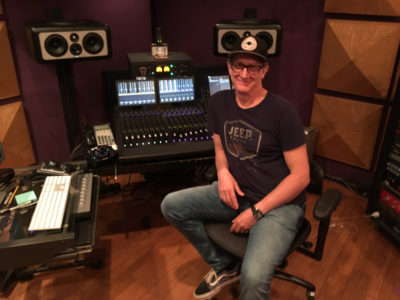
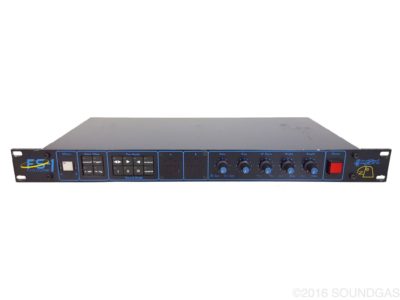
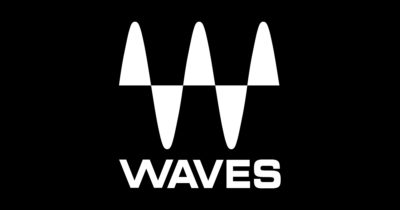
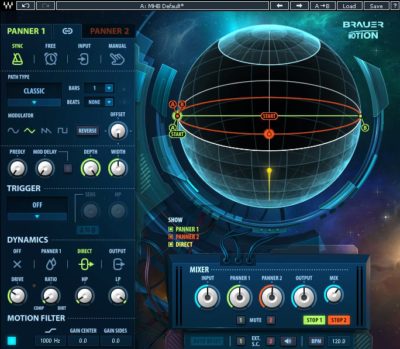
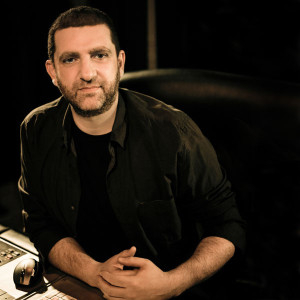
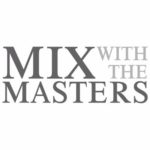
[…] This article can be found on sonicscoop.com […]